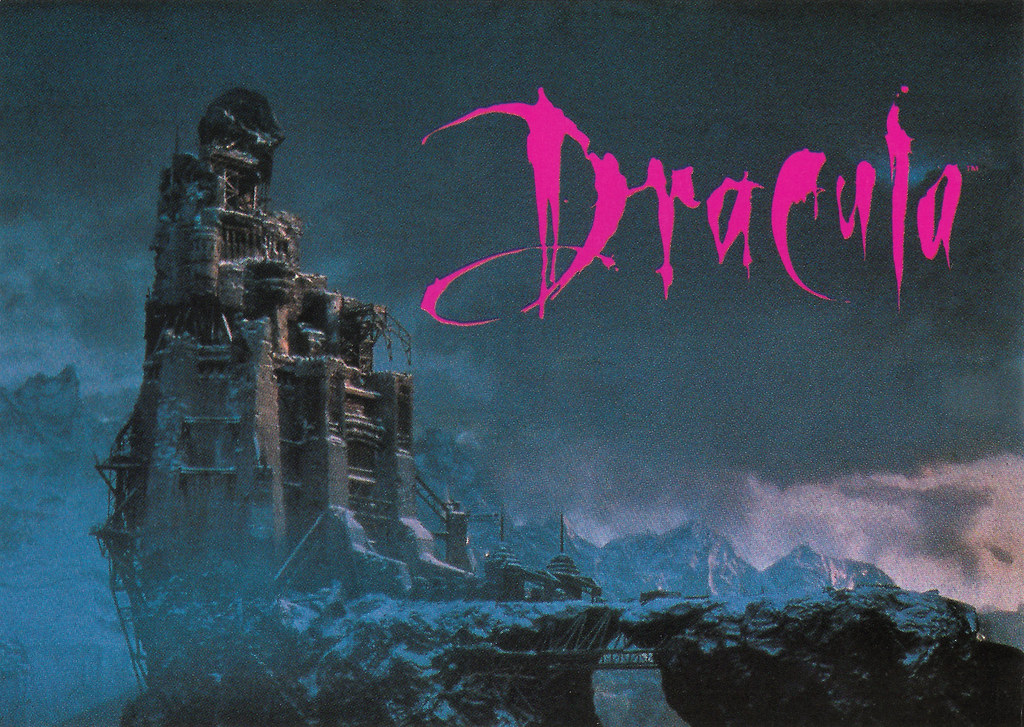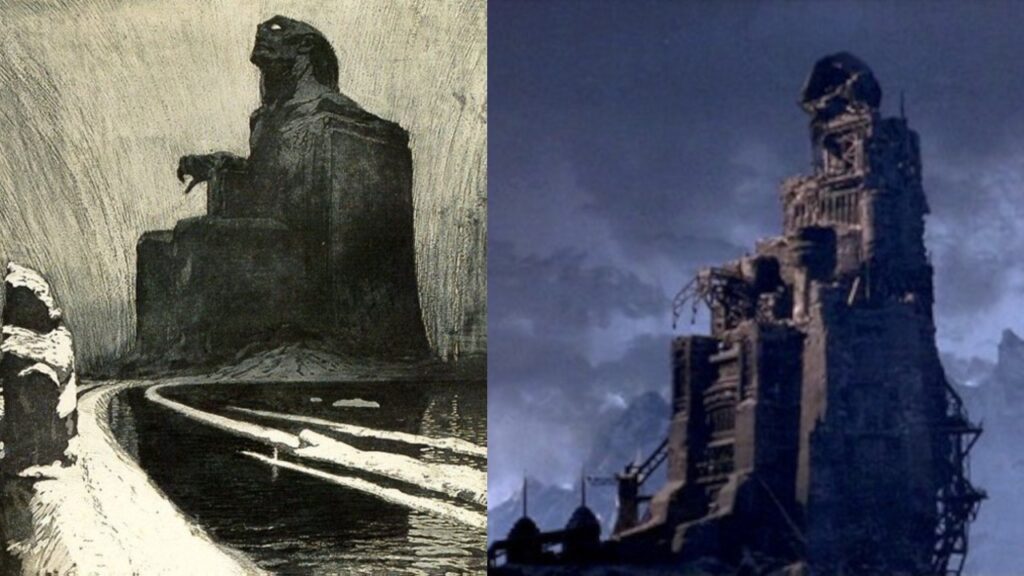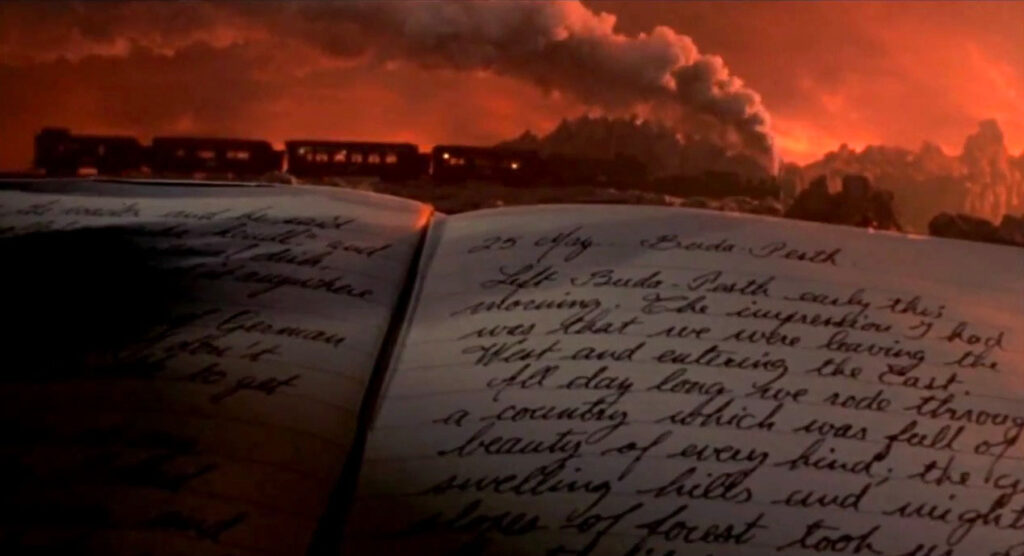Vampire Rules: Bram Stoker’s Dracula

”There he lay looking as if youth had been half-renewed, for the white hair and moustache were changed to dark iron-grey, the cheeks were fuller, and the white skin seemed ruby-red underneath; the mouth was redder than ever, for on the lips were gouts of fresh blood, which trickled from the corners of the mouth and ran over the chin and neck. Even the deep, burning eyes seemed set amongst the swollen flesh, for the lids and pouches underneath were bloated. It seemed as if the whole awful creature were simply gorged with blood; he lay like a filthy leech, exhausted with his repletion.” – Dracula by Bram Stoker
One of the greatest horror novels of all time came about because of a mistranslation. Bram Stoker ran into the name Dracula in the Whitby public library and thought it was Romanian for “Devil.” The name stuck in his mind. It’s obvious when you think about it. Why write a book about a historical figure noted for his legendary cruelty with no mention at all of any of his atrocities? Not that it matters, Vlad the Impaler is now so thoroughly entrenched in the Dracula mythos, the two have become quite inextricable.
As for Stoker’s actual inspiration, it was probably Carmella more than anything else. Although, his notes contain numerous points of inspiration for his work. It was stated in the Irish stage manager’s obituary that “he wrote only to sell.”
The book itself remains quite readable as it is free of the 19th century’s besetting literary sin of relating a story from the god’s eye viewpoint. The narrative is related entirely from journal entries, letters, A ship’s log, and newspapers.
Francis Ford Coppola’s version was the result of an actress pulling out of Godfather III. Winona Ryder had been slated to play Mary Corleone. She was a very in demand actress at the time and it was running her her ragged. She had finished Mermaids two days before she was supposed to start Godfather III. The day she was due to start Johnny Depp (her BF at the time) called to say she was too ill. She was diagnosed as having a complete nervous collapse and she would need to have an extended rest.
Coppola was pissed and ended up casting his own daughter which was a big part of the reason the movie sank.* Winona Ryder being smarter than most people think, arranged for a sit down with Copolla to clear the air if at all possible. At the end of the meeting, she offered the typical Hollywood ritual of departing and asked if he would like to look at a script she had recently optioned. Coppola politely glanced down and then did a double when he saw the title.
Making a Dracula film was on the auteur’s bucket list. Politically it was also a smart move. Godfather III hadn’t done well critically or financially. People weren’t returning his calls.
However, Winona Ryder was the late 80s / early 90s hotness. She could get a project greenlit just by putting her name to it.
Some of the casting choices seem odd because they were. Dracula is never an easy part to cast and there were no obvious choices for the title role in the early 90s. There were much worse choices that could have been made and Gary Oldman threw himself into the part. Sometimes good enough is the best you’re going to get.
However, Harker was badly miscast. Coppola frankly, didn’t give a damn who he hired. The studio wanted a box office idol. Which explains why they didn’t go with the incredibly obvious choice of Johnny Depp (he wasn’t as big as people remember). Christian Slater was approached and turned it down. Point Break had definitely put Keanu Reeves as hot property but everyone agrees the Wasian surfer dude was a terrible choice for an English solicitor. He tried but the truth was he couldn’t get the accent right and his ethnicity put him out of place in time when that still mattered.
The rest of the supporting cast of Elwes, Campbell, and Grant were rock solid. In preparation for their roles Coppola had them spend a lot time together doing guy things. Ryder and Sadie Frost spent time together doing girl things. That part did what it was supposed to.
Coppola did his film the enormous favor of flatly rejected computer-generated effects in favor of analog, and he didn’t expend much effort on the sets either, (with the exception of Castle Dracula). Instead, he made the costuming as absolutely lavish as possible.
The over-the-top costuming is what most people remember about Coppola’s Dracula. Rightfully so, they were designed by Eiko Ishioka and won her an Oscar which she richly deserved. Coppola said that he wanted the costumes to be the jewel of the sets,
Ishioka proved herself to be a genius in combining light and fabric. Her work started as a rebellion against the cliches of Lugosi’s Dracula. No evening formal wear, no white tie, and NO CAPES! Her gown for Dracula’s first appearance was a firm rejection of that as well as a rejection of gender identification or even membership in the human race.
This was a movie where the costumes wore the actors. Lucy (Sadie Frost) had bold colors and flowing fabric that showed more skin than a Victorian could get away with. Mina (Ryder) was defined by her high necklines and firmly fitted outerwear that gave the vague impression of being a full body corset.
It wouldn’t be a Coppola film if it wasn’t demanding for all involved. Gary Oldman would spend seven hours in the makeup chair, then ten shooting, another hour getting it all off leaving him with about five hours of sleep at night.
Dracula’s devil armor was all plastic and was constantly shattering. Oldman could barely move in it and was constantly stumbling around. When Winona Ryder was playing the corpse of Dracula’s wife Elisabetta, she can be seen visibly flinching in terror when Oldman shambles over to her in his clattering armor.
Sadie Frost had a baby at home and the one-year-old she was carrying was absolutely terrified of her vampire makeup and wouldn’t stop screaming and crying. Coppola got the shot he needed but new mom Frost was miserable at her inability to comfort the child.
Coppola also wanted the vampire hunter actors (Richard Grant, Billy Campbell, and Carey Elwes) to shout (in character) vile, humiliating, and degrading accusations at Ryder. All three of the men flatly refused. Winona Ryder insisted that they had to do it. I’ll give props to her for dedication to the craft (which by all accounts is authentic), but she was already developing notable mental health issues, the strain of working on a Francis Ford Coppola movie was doing nothing to help it.
In an attempt to curb his own worst instincts, he made the firm decision to shoot everything on a soundstage. It didn’t notably help.
The film itself was given to magnificent excess, the great auteur wasn’t even trying to restrain himself. He had done enough research to know that Stoker had never heard of Vlad the Impaler but at this point, he is part of the legend at this point. The film was filled with shoutouts to just about every version of Dracula. “I never drink wine” was from the 1931 Lagossi version. Quite a bit of Mureanu’s impressionism was used borrowed, Dracula’s shadows having a will of their own, and rising from his coffin stiff as a board. Quite a bit of lore came from the 1974 Curtis version of Dracula, to include the bit about Mina being the reincarnation of his long-dead love. I’m really not sure where Seward’s Morphine addiction came from.
He did go back to some of the very early and somewhat worrying spiritual goofiness of the Order of the Golden Dawn.

This is the Black Idol by Frantisek Kupka’s Resistance, or The Black Idol (1903). The Golden Dawn member Aliester Crowley got a little too excited by it. While it’s a stark piece it feels more in place in Robert Howard’s Stygia than Stoker’s Transylvania. Nonetheless, Coppola imported it.
The stylism of the photography is still the big selling point. Obvious miniatures were used but it worked in context. There were frequent scenes of half shots of journals and letters with actors in the frame as well.


And then there’s eroticism which was pervasive throughout. There’s always been a sexual component to film versions of Dracula. Lagossi’s were much more implied. Christopher Lee’s scenes had a lot of trouble getting past censors. Frank Langella’s iteration took things as far as could but they are clearly considered YouTube-safe.
John William’s music did a lot of the heavy lifting here.
There’s no getting around the fact that Stoker’s ending needs a punch-up. We found the coffin, opened it, there he was so we cut his throat and stabbed him in the heart. Definitely underwhelming for that kind of buildup.
Every version has dealt with the problem in one way or another. This movie’s ending still holds up pretty well. It was a decent action scene and followed the book to the extent that it could. Harker slashed his throat and Quincy (almost) landed the killing blow.
Since the romance was the driving force of this picture, giving Mina a tearful goodbye before granting Dracula peace.**
So does it hold up?
Absolutely. This film was always about its near absurdist level of style and given Francis Ford Coppola’s decisions to forgo the computer and his choice of indulging a brilliant costume designer have made this version quite timeless. As timeless as the grave.
*There were plenty of others.
**Dracula finding peace in the release of his curse was also in Stoker’s book.

